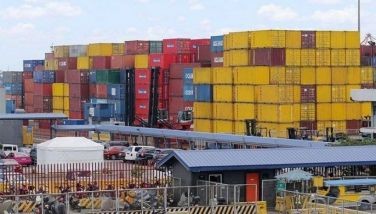Improved Philippine airports to ease Asean integration, says tourism body
MANILA, Philippines – Enhancing connectivity through improving the main gateways to the Philippines is a key factor in making the country’s seamless integration with the rest of the Association of Southeast Asian Nations, the ASEAN Tourism Association said.
“Since we are archipelagic, air infrastructure is the most important for us. We have to ensure that we have enough connectivity,” ASEANTA president Aileen Clemente said.
The National Tourism Development Plan (NTDP), the framework to guide the Department of Tourism (DOT) and other stakeholders in the private and public sector to harness the potential of the tourism sector as an engine for sustainbale growth, is part of the department’s thrust towards inclusive growth.
Part of the NTDP is upgrading secondary international airports such as Clark, Mactan, Davao and Iloilo, among others, and renovations of the primary gateway Ninoy Aquino International Airport (NAIA) 1 and 2.
Furthermore, installation of night landing facilities, improvement, rehabilitation and expansion of 23 domestic airports, 21 seaports and 28 strategic connecting roads are also part of the framework.
The DOT said there are 60.43 million current seat capacity available per week to Philippine carriers on the back of several air talks by the Aquino administration, 150 percent higher than the 24.12 million seat capacity in the previous administration.
The NTDP also aims for the Philippines to be the must-experience destination in Asia; develop and market competitive tourist products and destinations; improve tourism institutional governance and tourism manpower capabilities; and improve market access, connectivity and destination infrastructure.
Clemente added that for the Philippines to be well-integrated, the country should project an image that is an experiential destination and to consider the metrics to ensure full integration with the Asean community.
As an important factor in inclusive growth, Clemente said the tourism industry should look into tourist arrivals, tourist receipts and most importantly its contribution to the gross domestic product (GDP) growth and employment in the country.
International tourist arrivals last year reached 4.83 million while domestic travelers totaled to 54.6 million. Meanwhile, 4.76 million people were directly employed by the tourism industry in 2014 and is expected to reach 6.3 million and 7.4 million by 2015 and 2016, respectively.
The tourism industry also contrubuted 7.8 percent to the Philippine economy last year and is seen to further rise to 8.7 percent by 2016.
Moreover, a sense of tourism culture will help the country’s tourism industry to maximize the opportunities that the Asean integration will bring, the Asean Business Advisory Council said.
- Latest
- Trending




























